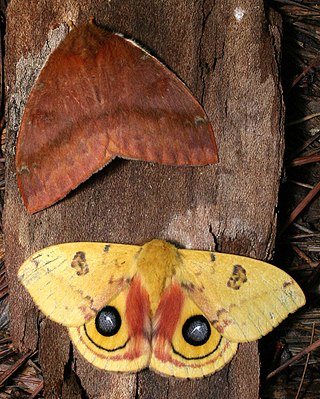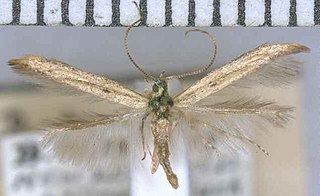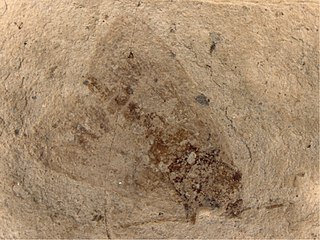
The Smithsonian Institution, or simply the Smithsonian, is a group of museums and education and research centers, the largest such complex in the world, created by the U.S. government "for the increase and diffusion of knowledge". Founded on August 10, 1846, it operates as a trust instrumentality and is not formally a part of any of the three branches of the federal government. The institution is named after its founding donor, British scientist James Smithson. It was originally organized as the United States National Museum, but that name ceased to exist administratively in 1967.

Spencer Fullerton Baird was an American naturalist, ornithologist, ichthyologist, herpetologist, and museum curator. Baird was the first curator to be named at the Smithsonian Institution. He eventually served as assistant Secretary of the Smithsonian from 1850 to 1878, and as Secretary from 1878 until 1887. He was dedicated to expanding the natural history collections of the Smithsonian which he increased from 6,000 specimens in 1850 to over 2 million by the time of his death. He published over 1,000 works during his lifetime.

The National Museum of Natural History is a natural history museum administered by the Smithsonian Institution, located on the National Mall in Washington, D.C., United States. It has free admission and is open 364 days a year. In 2021, with 7.1 million visitors, it was the eighteenth most visited museum in the world and the second most visited natural history museum in the world after the Natural History Museum in London. Opened in 1910, the museum on the National Mall was one of the first Smithsonian buildings constructed exclusively to hold the national collections and research facilities. The main building has an overall area of 1.5 million square feet (140,000 m2) with 325,000 square feet (30,200 m2) of exhibition and public space and houses over 1,000 employees.

Automeris io, the Io moth or peacock moth, is a colorful North American moth in the family Saturniidae. The io moth is also a member of the subfamily Hemileucinae. The name Io comes from Greek mythology in which Io was a mortal lover of Zeus. The Io moth ranges from the southeast corner of Manitoba and in the southern extremes of Ontario, Quebec, New Brunswick and Nova Scotia in Canada, and in the US it is found from Montana, North Dakota, South Dakota, Nebraska, Colorado, New Mexico, Texas, Utah, east of those states and down to the southern end of Florida. The species was first described by Johan Christian Fabricius in 1775.

Orthonama obstipata, the gem, is a moth of the family Geometridae. The species was first described by Johan Christian Fabricius in 1794. It is a cosmopolitan species. In continental Europe though in the northeast, its range does not significantly extend beyond the Baltic region and it is absent from northern Russia. This well-flying species is prone to vagrancy and able to cross considerable distances of open sea; it can thus be regularly found on the British Isles and even on Iceland.

Paul Dognin was a French entomologist who specialised in the Lepidoptera of South America. Dognin named 101 new genera of moths.

Argyractis is a genus of moths of the family Crambidae.

Rivula is a genus of moths in the family Erebidae described by Achille Guenée in 1845.

Papilio aristodemus, the Schaus' swallowtail or island swallowtail, is a species of American butterfly in the family Papilionidae. It is found in southern Florida in the United States and throughout the West Indies. It is named in honor of William Schaus.

Batrachedra arenosella, the armoured scale eating caterpillar or the coconut moth, is a species of moth of the family Batrachedridae. It was first described by Francis Walker using specimens collected in Auckland, New Zealand. It has been hypothesised that the New Zealand moth may contain two distinct species. As well as the moth species in New Zealand, this name has been applied, perhaps incorrectly, to moths found in India, Indonesia, the Malay Peninsula, and Réunion, as well as in Australia, from the Northern Territory and northern Queensland to New South Wales and South Australia.

William Schaus was an American entomologist who became known for his major contribution to the knowledge and description of new species of the Neotropical Lepidoptera.

Paleolepidopterites is a collective genus of fossil moths which can not be placed in any defined family. The included species were formerly placed in the leaf-roller family Tortricidae and are known from fossils found in Russia and the United States. The collective genus contains three species: Paleolepidopterites destructus, Paleolepidopterites florissantanus, and Paleolepidopterites sadilenkoi, formerly placed within the genera Tortrix and Tortricites respectively. The three species were formally redescribed and moved to the new collective genus by Heikkilä et al (2018).

John Merton Aldrich was an American entomologist. Aldrich was the Associate Curator of Insects at the United States National Museum. He is considered one of the most prolific entomologists in the study of flies.

Marcus Ward Lyon Jr. was an American mammalogist, bacteriologist, and pathologist. He was born into a military family, and demonstrated an early interest in zoology by collecting local wildlife around his father's army posts. He graduated from Brown University in 1897, and continued his studies at George Washington University while working part-time at the United States National Museum (USNM). At the same time, he taught at Howard University Medical School and later George Washington University Medical School. He received his Ph.D. from George Washington University in 1913. In 1919, he and his wife, Martha, moved to South Bend, Indiana to join a newly opened clinic. Prior to moving, Lyon had published many papers on mammalogy, both during and after his tenure at the USNM. In these papers, he had formally described six species, three genera, and one family. Once in South Bend, he began to publish medical studies, too, but continued his work in mammalogy, with a particular focus on the local fauna of Indiana. He published more than 160 papers during his career.
Chamaita edelburga is a moth of the family Erebidae. It was described by Schaus in 1924. It is found on the Philippines (Luzon).
Robert F. Sternitzky was a United States lepidopterist and illustrator. Butterfly and moth specimens he collected are in a number of collections, including those of the Harvard Museum of Natural History, the Essig Museum of Entomology, Manitoba Museum, and the Smithsonian National Museum of Natural History. He collected primarily in California and Arizona.

William Harvey Brown was an American naturalist who later settled in Rhodesia. Whilst studying at the University of Kansas Brown volunteered with the National Museum of Natural History and took part in collecting expeditions in the US. While employed by the Smithsonian Institution he took part in an expedition to the Belgian Congo to observe the Solar eclipse of December 22, 1889. Brown collected a wide variety of specimens for the national museum and, as a result, became known as "Curio Brown". Brown remained in South Africa after the expedition and joined the British South Africa Company's 1890 Pioneer Column expedition that annexed Mashonaland. He afterwards fought in the First Matabele War and was awarded significant tracts of land in Rhodesia. Brown was wounded during the 1896-97 rebellion in Mashonaland and returned briefly to the US where he published a book about his experiences. Brown returned to Rhodesia and was elected to the Salisbury city council, including a period as mayor, and to the Southern Rhodesian Legislative Council.

Margaret Sordahl was an ornithologist who worked for the Smithsonian Astrophysical Observatory. She collected two holotype specimens, Erythropygia coryphaeus abboti and Serinus albogularis sordahlae, the latter of which was named in her honour.

Dugonia is a monotypic genus of moths in the family Notodontidae, containing only the species Dugonia eliera. The genus and species were both first described in 1928 by William Schaus from an unspecified number of female specimens from the Dognin collection. It is known from French Guiana, with a type locality in Saint-Laurent-du-Maroni.

Miresa clarissa is a species of moth from the genus Miresa. The species was first described by Caspar Stoll in 1790.


















